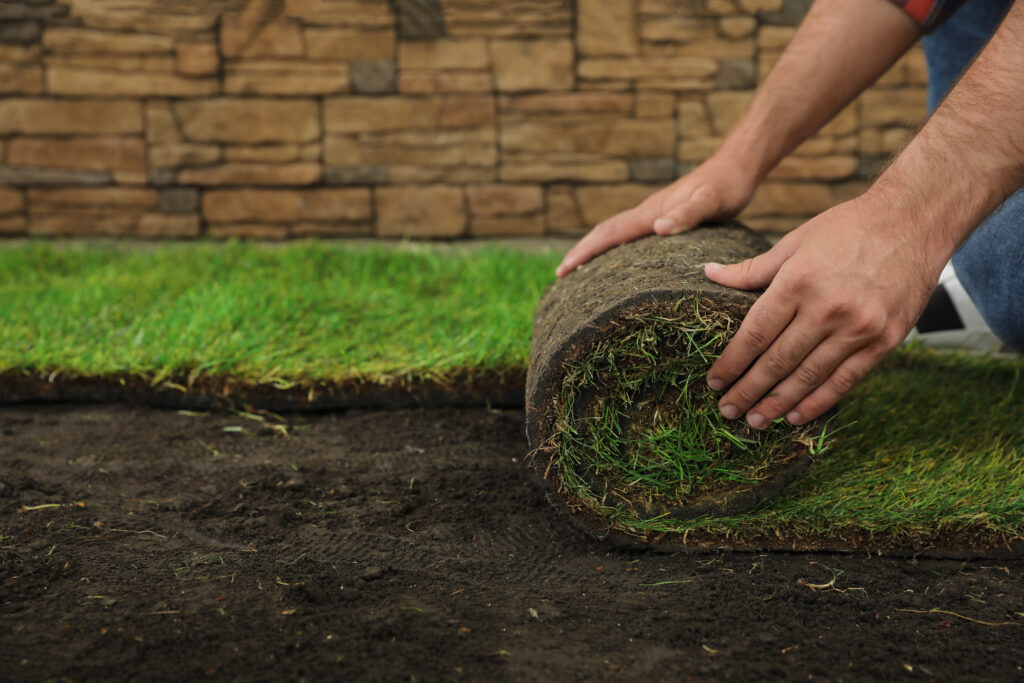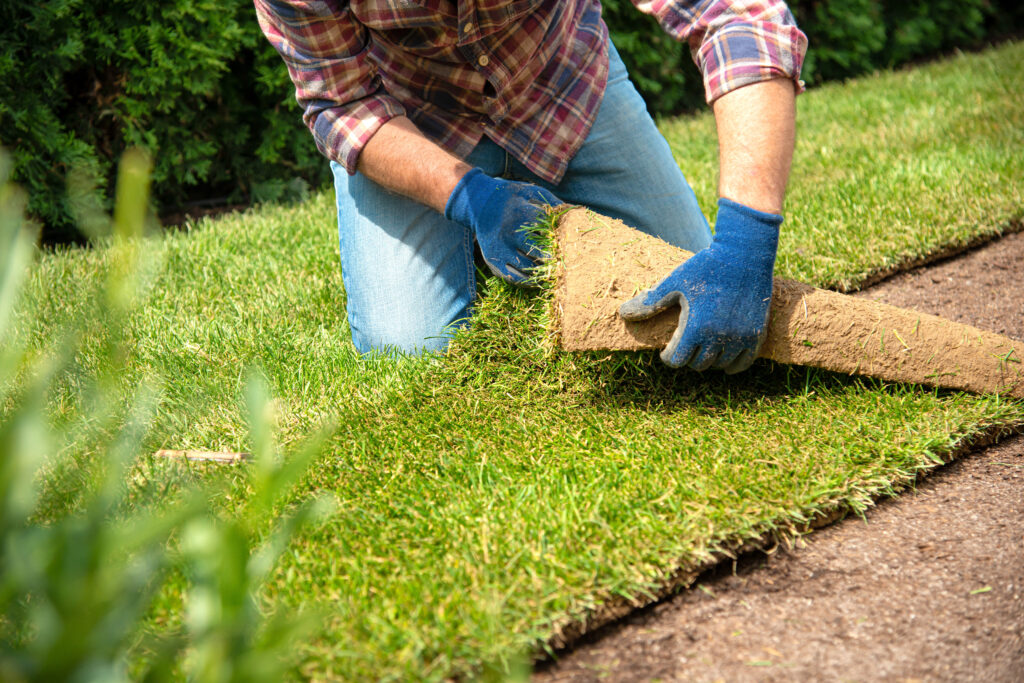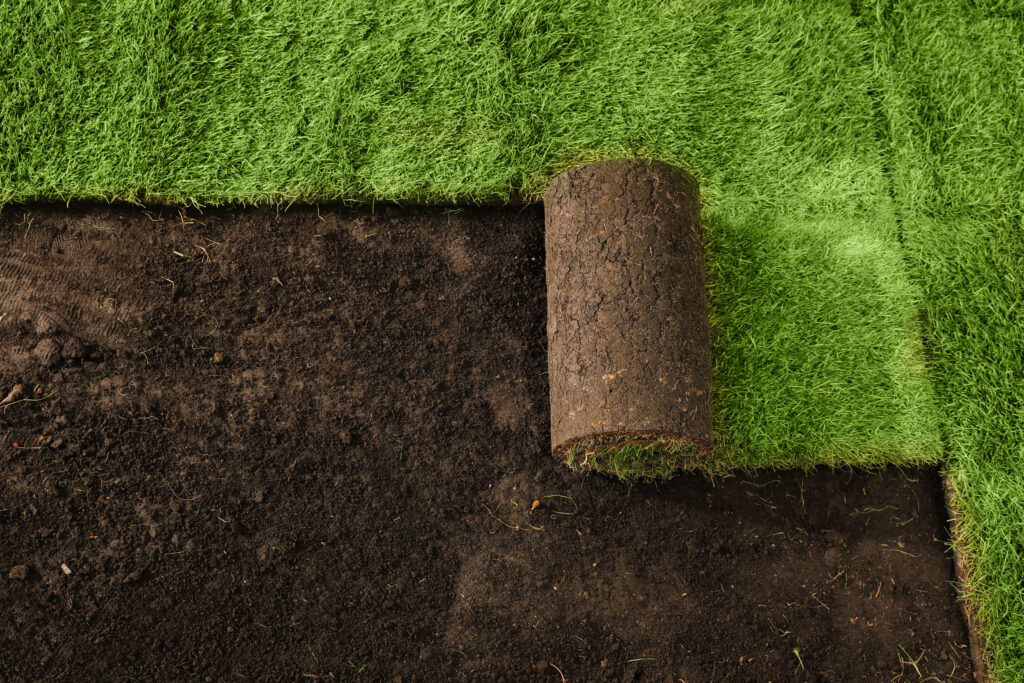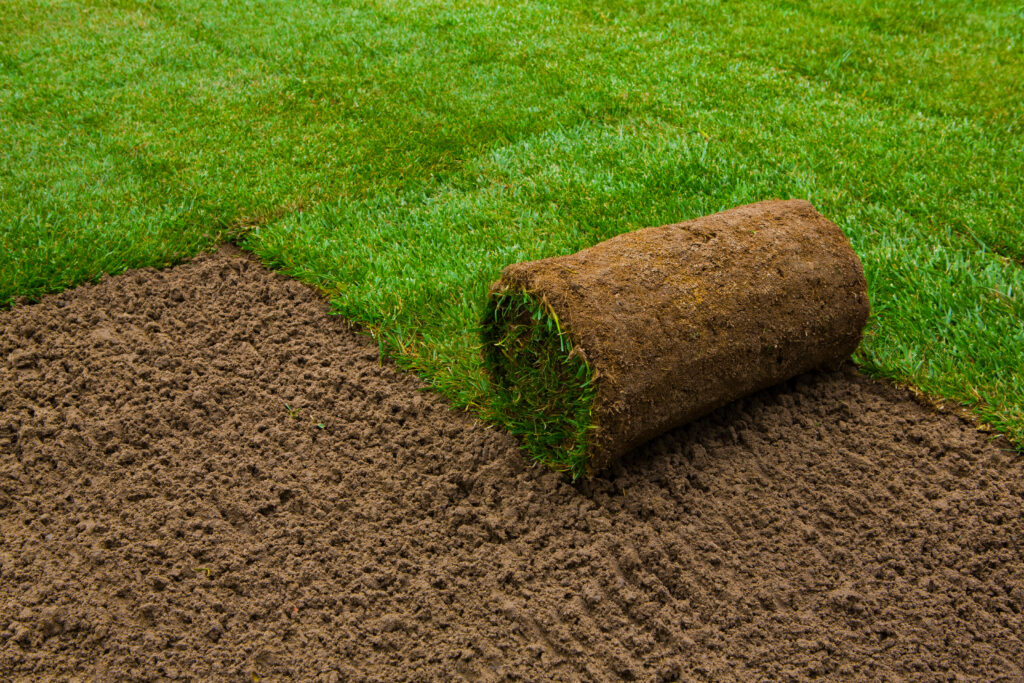
Table of contents
- Transform Your Fort Worth Lawn with Expert Sod Installation
- Choosing the Right Type of Sod for Your Arlington Property
- Benefits of Professional Sod Installation
- Sod Installation Process: What to Expect
- Best Grass Types for Fort Worth & Arlington Lawns
- Lawn Care Tips After Sod Installation
- Why Choose S&T Landscape Services for Sod Installation?
- Get a Free Quote for Sod Installation in Fort Worth, Arlington, and Surrounding Areas
- FAQs
Looking for a lush, green lawn? By using sod, you can achieve it fast. With sod there are no seeds to plant or waiting time for the grass to appear. S&T Landscape Services offers sod installation to give you a ready-to-go lawn in the Fort Worth or Arlington area.
Transform Your Fort Worth Lawn with Expert Sod Installation

Sod can enhance the beauty of your landscape. Professional installation can help get your sod started right. The experts at S&T Landscape Services can install a beautiful sod landscape that transforms your Fort Worth-area lawn. By working with a sod installation company, you can get professional advice on a good sod for your lawn and how to maintain it.
At S&T Landscape Services, we can enhance your lawn with beautiful sod.
Choosing the Right Type of Sod for Your Arlington Property
There are several types of sods available that will work well for your Arlington property. To help select one, you’ll want to ask yourself questions like the following:
- How will the lawn be used?
- Will children or animals run on it?
- How much sod maintenance am I willing to do, or am I willing to invest in professional maintenance?
- What is the look and feel I want in my sod?
- Will the sod be in direct sunlight, or will some of it be in the shade?
At S&T Landscape Services, we can help you find a great sod type for your needs.
Benefits of Professional Sod Installation
Installing sod on your landscape takes more than just laying it on a lawn. A lot of work goes into installing it correctly. The following are some of the benefits of having your sod professionally installed.
Less Potential for Physical Strain
Installing sod is a physically demanding job that gets tougher the larger the area. You won’t have to do any heavy lifting or labor-intensive work with professional installation.
Time-Saving
When skilled professionals install sod, they won’t spend time aquiring the necessary equipment or learning to install sod through trial and error. The time saved when using professional installation can be significant.
Knowledge and Experience
Reputable professional sod installers have the training and experience to install sod correctly.
Sod Installation Process: What to Expect

Several steps are involved in installing sod. The following are a few of the steps to expect when sod is being installed in your lawn. Please note that this is not intended to be instructions for installing sod yourself, but an explanation of a professional installation.
Soil Testing
A soil test will need to be conducted to determine its current condition. It may take ten or more days to receive the test results.
Measuring the Landscape
Your landscape will need to be measured to determine the amount of sod required.
Preparing the Soil
Before sod is placed, the ground must be prepared. The area will be cleared of any grass and vegetation. Then the soil will be tilled to help the soon-to-be-installed sod take root. The soil may need to be amended; this may involve adding compost or other organic matter, acidifying products like lime, or fertilizer.
Soil Grading
The soil will need to be leveled out. This makes mowing easier. The soil should be one or two inches lower next to concrete walkways or driveways.
Installing the Sod
The following are steps that will be taken during the sod installation process:
- Moistening the Soil: The morning of the sod installation, the soil should be moistened but not to the point where it is soggy or squishy if it isn’t already wet from a previous watering or rain.
- Laying Sod: The first row of sod will be laid on the longest and straightest edge of your yard. When laying the other rows, the seams will be staggered to prevent them from lining up and causing damage through water channeling.
- Trimming: The sod edges will need to be trimmed around edges and other irregular shapes, such as sprinkler heads.
- Lawn Rolling: A lawn roller may be used to remove air pockets between the soil and sod. Doing this helps establish good contact between the topsoil and sod.
- Watering: Immediately following the sod’s installation, it must be watered for 40 minutes to an hour.
Best Grass Types for Fort Worth & Arlington Lawns
There are many types of sod available, and it is essential to select one that is a good fit for the Arlington or Fort Worth climate and your needs. Warm season sods are popular in the southern part of the United States due to their heat resistance. These sods generally turn dormant (become brown) when the temperature is between 55 and 65 degrees Fahrenheit.
The following is a list of types of sods that you might want to consider for your Arlington, Texas property. Please note that the sods listed below have several variations available with different attributes.
Bermuda Grass
Bermuda grass is robust, beautiful, and thick, making it popular for places like golf courses, athletic fields, and other places with large amounts of foot traffic. It features fine blades of grass. This sod is established easily and is quick to recover if flattened. Bermuda grass grows in most soil types, even sandy soils, and is drought-tolerant and disease-resistant.
St. Augustine Grass
St. Augustine Grass has a blue-green color and thick grass blades. If properly maintained, St. Augustine grass can acquire a carpet-like feel and appearance. It requires minimal sunlight and performs well in the shade.
St. Augustine Grass does require a good amount of water and doesn’t do well in droughts.
Zoysia Grass
Zoysia grass has a lush and deep green appearance and a medium-coarse texture. This grass does well in droughts and is resistant to heat, cold, and weeds. It is tolerant of shade, requiring little sun.
Zoysia grass needs soil with good drainage and requires dethatching during its active growing season (usually in the late spring to early summer).
Buffalo Grass
Buffalo grass has a blue-green/gray-green color and curls downward as it grows, reducing the amount of mowing it needs. Buffalo Grass does well in heat, low-nutrient soil, and periodic drought conditions—all situations it may encounter in the Arlington, Texas, area. It is also strongly resistant to disease. Buffalo Grass may become dormant when droughts occur, but recovers quickly with water.
Too much water can cause Buffalo Grass to experience weed problems, and it doesn’t handle heavy foot traffic well.
Tall Fescue
Tall fescue grows in clumps, has a dark green color with ribs on the topside, and a glossy look and smooth feel on the underside. Being a cool-season grass, tall fescue has a moderate shade tolerance and maintains its green color during winter.
During summer months or drought periods, it may require extra water. Tall fescue might become dormant in the summer months. In times of high heat, it may thin, which may require annual reseeding.
Lawn Care Tips After Sod Installation
The following are several tips to be aware of when caring for a newly installed sod lawn.
- Avoid stepping on the newly installed sod until it is mowed for the first time.
- Don’t use chemical treatments until the sod has completely rooted and has begun to grow earnestly.
- Avoid yanking out weeds before the sod’s roots have properly been established, and instead, pull them gently out to prevent also pulling up sod.
Why Choose S&T Landscape Services for Sod Installation?
S&T Landscaping has been helping people in the Fort Worth and Arlington areas with their landscaping needs since 1997. Our locally and family-owned company has the experience and knowledge to provide you with exceptional sod installation service
Get a Free Quote for Sod Installation in Fort Worth, Arlington, and Surrounding Areas

If you’re located in Fort Worth, Arlington, or the surrounding area, we can install your sod. Contact us for a free sod installation quote!
FAQs
Spring and early fall are the ideal times for installing new sod; however, it can generally be installed year-round in North Texas—weather permitting.
While the time can vary based on various factors, sod may start to take root within 10 to 14 days. The sod can fully take root within two to six weeks with the correct combination of air, water, and sun.
The following types of sod grass grow best in the Fort Worth and Arlington, Texas, area:
-Bermuda grass
-St. Augustine grass
-Zoysia grass
-Buffalo grass
-Tall Fescue
Please note that the following is a rough guide and may need to be modified based on your specific situation such as type of sod, amount of rain received, and location.
During the first week, you’ll need to water your sod daily. Following the first week, water it every two days. When the sod starts to take root, you can water it twice a week.
You’ll need to check the sod’s water needs each day. One way to do this is by carefully lifting a corner of sod after it has been watered to see if it is moist.
